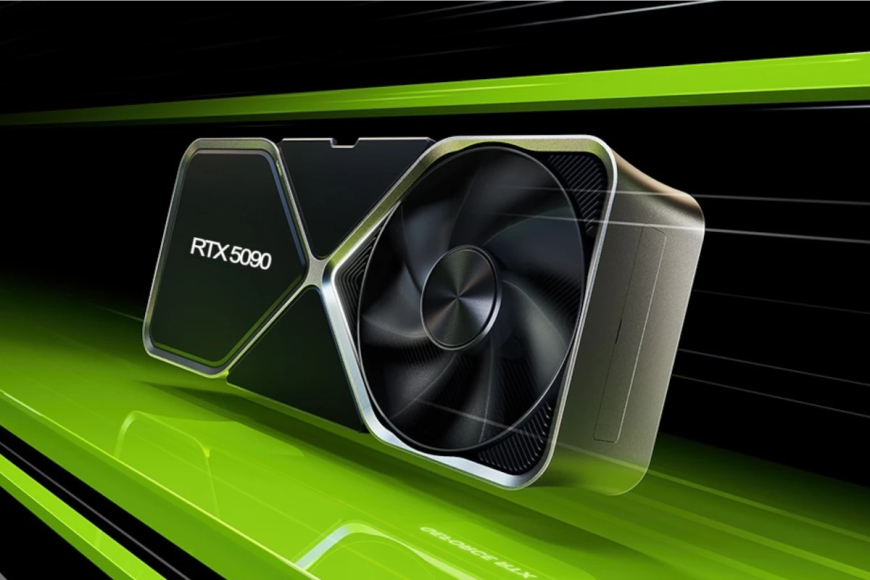NVIDIA Slashes GeForce RTX 50-Series Prices Across Europe in Major Boost for PC Gamers
NVIDIA has slashed prices on its GeForce RTX 50-series GPUs across Europe, making the powerful Blackwell graphics cards more affordable for gamers and creators.

In a move that has sent ripples through the global gaming and technology community, NVIDIA has announced significant price cuts on its flagship GeForce RTX 50-series graphics cards across Europe. The decision, confirmed by NVIDIA’s retail partners and industry reports, comes amid increasing competition in the GPU market and a shifting demand landscape among PC gamers.
The company’s “Blackwell” GPU architecture, which powers the RTX 50-series, was initially launched at premium price points, targeting high-end enthusiasts and professional users. However, growing criticism over affordability and intensifying competition from AMD’s Radeon lineup appear to have prompted a strategic rethink.
For gamers and creators across Europe, this move is being hailed as a game-changing victory, making cutting-edge performance far more accessible than before.
What Has Changed: Price Cuts Across the Lineup
According to reports from European retailers and NVIDIA’s distribution network, prices for the RTX 5090, RTX 5080, and RTX 5070 Ti have been slashed by margins ranging from 15 to 25 percent.
-
The RTX 5090, NVIDIA’s most powerful consumer GPU, has seen reductions of up to €400 in some markets.
-
The RTX 5080, a popular choice among competitive gamers, now retails for under €1,000 in several countries, compared to its original €1,299 launch price.
-
Even the more mainstream RTX 5070 Ti has received substantial cuts, bringing it closer to mid-range affordability.
This adjustment positions NVIDIA more competitively against AMD’s RX 8000 series, which had been undercutting NVIDIA in price-to-performance comparisons since launch.
For official product details, users can visit the NVIDIA website to see the latest specifications and availability.
Why the Price Cuts Now?
Industry analysts believe NVIDIA’s decision was influenced by several converging factors:
-
Competitive Pressure from AMD – AMD’s Radeon RX 8000 GPUs have been aggressively priced, offering strong performance per dollar. This put NVIDIA under pressure to retain market share in Europe, where PC gaming remains strong.
-
Slowing Demand After Pandemic Boom – During the pandemic, GPU prices soared due to shortages and a surge in gaming and crypto-mining demand. With supply chains stabilized, consumer demand has normalized, leaving NVIDIA with unsold stock in some regions.
-
European Market Sensitivity – The European gaming market is highly price-conscious. Rising inflation and cost-of-living concerns have made gamers less willing to spend on ultra-premium hardware.
-
Strategic Future Positioning – By lowering prices, NVIDIA ensures stronger adoption of its Blackwell architecture, solidifying its ecosystem for AI-driven gaming features like DLSS 4.0 and ray tracing.
What This Means for PC Gamers
For PC enthusiasts, the cuts represent one of the most significant affordability shifts in the GPU market in years. Players who were previously priced out of the latest generation now have access to performance that was once limited to professionals and eSports athletes.
European online communities have been buzzing with excitement since the news broke. One gamer in Germany noted on social media: “I held off on upgrading because of the ridiculous launch prices. Now, the RTX 5080 finally feels like a realistic purchase.”
For content creators, the affordability of higher-end GPUs also means faster video editing, 3D rendering, and AI workloads—tasks where the RTX 50-series excels.
Industry Impact: A Win for Competition
Beyond gamers, the decision could reshape the GPU industry’s pricing strategies. For years, NVIDIA has dominated the high-performance graphics card segment, often setting prices that smaller competitors had to adapt to. By reducing its own prices, NVIDIA is effectively acknowledging the pressure AMD has created.
Some experts argue this may be a turning point, signaling the beginning of a more competitive and consumer-friendly GPU market. Others caution that NVIDIA may only be cutting prices temporarily to clear inventory ahead of future product launches.
Still, for the immediate term, the move underscores a win for consumers who have long complained about skyrocketing GPU prices.
Retailer Reactions and Availability
European retailers, particularly in Germany, France, and the UK, have already updated listings to reflect the new pricing. Some stores even reported short-term sellouts as customers rushed to take advantage of the reductions.
E-commerce platforms like Amazon UK and Germany’s Mindfactory have also adjusted prices, though availability varies by region. Reports suggest that limited-time promotional bundles—including game vouchers—are being paired with certain RTX models to further drive sales.
The “Blackwell” Advantage
While the pricing shift is headline news, it’s worth remembering why the RTX 50-series matters. Built on NVIDIA’s cutting-edge Blackwell GPU architecture, the lineup delivers massive improvements in ray tracing, DLSS 4.0, AI-driven frame generation, and efficiency compared to the RTX 40-series.
The RTX 5090, for example, has set new benchmarks in 4K and 8K gaming, while also appealing to AI researchers and creative professionals. By cutting prices, NVIDIA ensures that more users can access these advanced capabilities, potentially locking in loyalty before AMD responds with next-gen updates.
For detailed benchmarks and comparisons, tech outlets like TechRadar have been tracking performance reviews of the RTX 50 lineup.
Analysts Weigh In
Technology market analysts suggest that the price cuts could ripple into global markets beyond Europe. If successful in boosting sales, NVIDIA may replicate the strategy in the United States and Asia-Pacific.
Mark Ellis, a semiconductor analyst based in London, explained:
“NVIDIA understands that the European market is a bellwether. If consumers there respond positively, similar price adjustments could appear in North America. This is about securing mindshare before AMD makes its next move.”
What It Means for the Future
Looking forward, NVIDIA’s price adjustment raises questions about how long these reduced costs will remain in place. Some insiders believe this could be a permanent repositioning, while others suspect that once inventories normalize, prices may creep upward again.
Regardless, the move may signal the start of a healthier competitive cycle, where both AMD and NVIDIA are forced to prioritize consumer accessibility alongside innovation.
For gamers, the message is clear: now is one of the best times in years to upgrade.
Conclusion
The decision by NVIDIA to cut prices on its GeForce RTX 50-series GPUs across Europe marks a watershed moment in the PC hardware landscape. By making its Blackwell-powered graphics cards more affordable, NVIDIA has not only given gamers a long-awaited break but also challenged industry pricing norms.
Whether this represents a permanent shift or a temporary tactical move, it reflects the growing influence of consumer demand and competitive pressure on the global tech giant. For now, European gamers and creators are celebrating what feels like a long-overdue win.
What's Your Reaction?
 Like
0
Like
0
 Dislike
0
Dislike
0
 Love
0
Love
0
 Funny
0
Funny
0
 Angry
0
Angry
0
 Sad
0
Sad
0
 Wow
0
Wow
0








































































